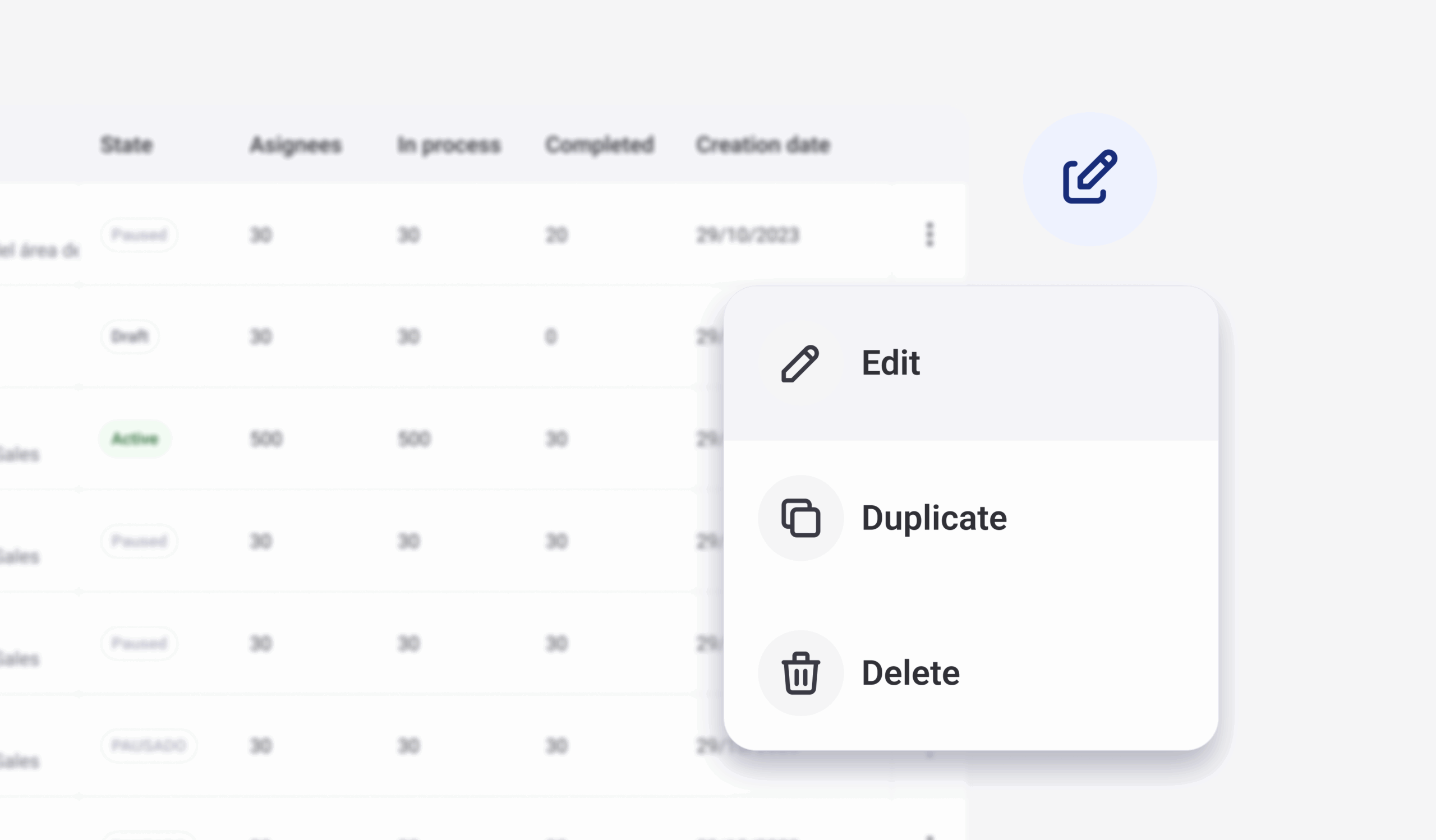Introduction
In today’s dynamic business world, a company’s organizational chart is much more than a simple layout of roles and hierarchies; it is the framework that defines how communications flow, decisions are made, and strategies are executed. Imagine a company as a living organism: each department and each employee play a crucial role in the overall functioning. But how do you ensure that everyone clearly understands their position and responsibility within this structure?
The secret lies in the organizational chart. This visual document not only maps the hierarchy and function of each team member but also establishes communication lines and facilitates effective collaboration across all levels of the organization.
In this article, we will thoroughly explore how to create a company organizational chart that is not only informative but also acts as a strategic tool to enhance operational efficiency and strengthen organizational culture. From the initial definition of roles to choosing the most appropriate organizational structure, we will guide you through the essential steps and provide practical examples to illustrate each concept.
What is a Company Organizational Chart?
Before diving into the details of its creation, it is crucial to understand what exactly a company organizational chart is and why it is fundamental for any business, regardless of its size or sector.
Definition of a Company Organizational Chart
A company organizational chart is a visual and structural representation of the hierarchy and relationships between different roles within an organization. Essentially, it is a map showing who reports to whom, what departments exist, and how they communicate with each other.
Importance of the Organizational Chart in the Organization
The organizational chart not only defines the formal structure of the organization but also serves several key roles:
– Clarity in Roles and Responsibilities: It helps all employees clearly understand what is expected of them and who is responsible for what function.
– Facilitates Communication and Collaboration: It establishes clear lines of communication between different hierarchical levels and departments, thus improving operational efficiency and problem-solving.
– Strategic Alignment: It allows everyone in the organization to understand how their work contributes to the company’s overall objectives and goals.
Benefits of a Well-Defined Organizational Chart
A well-defined organizational chart of a company is not just a visual representation of the organizational structure; it also brings a series of tangible benefits that significantly enhance the internal functioning of a company.
Improvement in Clarity of Roles and Responsibilities
One of the main benefits of a well-structured organizational chart is the clarity it provides regarding roles and responsibilities within the organization. Each employee can easily visualize whom they report to and who their direct and indirect colleagues are. This eliminates confusion, reduces conflicts over who has authority over which area, and improves overall efficiency.
Optimization of Internal Communication and Team Collaboration
With clear lines of communication established in the business organizational chart, more effective communication is fostered between different departments and hierarchical levels. Teams can collaborate more smoothly and quickly, sharing critical information and working together towards common goals. This not only enhances productivity but also strengthens the sense of unity and belonging within the company.
Facilitation of Decision-Making and Delegation of Authority
A well-defined organizational chart of a company also facilitates decision-making by clarifying who has the authority to approve projects, allocate resources, and solve problems. This streamlines the decision-making processes, reducing bureaucracy, and enabling rapid responses to market changes and challenges. Additionally, the delegation of authority becomes more effective and precise, ensuring that responsibilities are assigned equitably and efficiently.
Together, these benefits not only improve a company’s organizational structure but also strengthen its ability to adapt and thrive in a dynamic and competitive business environment. In the next section, we will explore the different types of organizational charts that you can implement according to your company’s specific needs.
Types of Company Organizational Charts
There are several types of company organizational charts, each with unique characteristics that best suit different organizational structures and business needs. Below, we explore three common types of organizational charts and their specific applications:
Vertical Organizational Chart
The vertical organizational chart, also known as hierarchical or pyramidal, is the most traditional and commonly used type in companies with a clear and defined hierarchical structure. In this type of chart, employees are organized in levels, and each level reports directly to the higher level. For example, in a manufacturing company, a vertical organizational chart might show the president at the top, followed by vice presidents, department managers, supervisors, and line workers.
Application: This type of organizational chart is ideal for companies that require clear supervision and a defined authority structure. It facilitates direct communication and efficient resource management in environments where decisions must flow downward effectively.
Horizontal Organizational Chart
The horizontal organizational chart, also known as a flat organizational chart, is characterized by having fewer hierarchical levels and promoting collaboration and autonomy among employees. In this type of structure, communication and decision-making are more equitably distributed among team members, fostering a more collaborative and agile organizational culture.
Benefits: It favors innovation and creativity by allowing teams to work more autonomously and collaboratively. It reduces bureaucracy and improves horizontal communication between departments, facilitating the rapid implementation of new ideas and solutions.
Matrix Organizational Chart
The matrix organizational chart combines elements of functional and divisional structures, allowing employees to report to multiple supervisors according to project or task needs. This type of structure is common in companies that operate in complex environments or industries that require a quick response to external changes.
Application: It is particularly effective in project-based organizations, consulting, research and development, where multidisciplinary teams must collaborate on multiple projects simultaneously. It facilitates flexibility and adaptability by allowing resource allocation according to the specific demands of each project.
In the next section, we will explore the detailed steps to create an effective organizational chart, considering these different types and their specific applications within a company.
Steps to Create an Effective Organizational Chart
Creating an effective business organizational chart requires following a structured process that ensures accuracy and clarity in representing the company’s organizational structure. Below, we detail the essential steps to create an effective organizational chart:
Identification of Roles and Departments
Before starting to design the organizational chart, it is crucial to clearly and precisely identify the key roles and departments within the company. Here are some effective methods to carry out this identification:
– Interviews and Consultations: Conduct individual interviews with department heads and other key leaders to understand their responsibilities and how they relate to other roles within the organization. This will help you map existing roles and identify potential gaps or redundancies in the organizational structure.
– Analysis of Job Descriptions: Review job descriptions for each department to understand the specific responsibilities associated with each role. This will allow you to categorize roles into functional categories and establish clear reporting relationships.
– Direct Observation and Workflow Analysis: Directly observe how employees and departments interact on a day-to-day basis. This will give you a practical understanding of how tasks are performed and how responsibilities are distributed, which is crucial for accurately representing these interactions in the organizational chart.
Once this stage is completed, you will have a clear view of the company’s current organizational structure, which will serve as a solid foundation for creating the organizational chart.
Definition of Organizational Structure
Once the key roles and departments are identified, the next step is to define the organizational structure that best suits the company’s needs and objectives. Several factors are considered here:
– Choosing the Type of Organizational Structure: Depending on the company’s size, the industry in which it operates, and its long-term strategic goals, you can choose from different types of organizational structures such as:
– Functional Structure: Groups employees according to specific functions like marketing, sales, and finance. It is ideal for small companies or those with a clear focus on specialized functions.
– Divisional Structure: Organizes the company into separate divisions or business units, each with its own set of functions and resources. It is common in large companies with multiple product lines or services.
– Matrix Structure: Combines elements of functional and divisional structures, allowing employees to report to multiple supervisors according to project or client needs. It is suitable for organizations that require flexibility and adaptability.
– Strategic Considerations: Evaluate how each type of organizational structure will affect internal communication, decision-making, and the company’s operational efficiency. Ensure that the chosen structure aligns with the company’s strategic objectives to guarantee effective implementation.
Selection of Tools and Software
Once the organizational structure is defined, it is crucial to select the right tools for designing, managing, and sharing the organizational chart effectively. We recommend considering the following:
– Tools for Designing Organizational Charts: Use tools like Lucidchart, Microsoft Visio, or integrated applications like Humand, which facilitate the creation of organizational charts intuitively and professionally.
– Advantages of Integrated Platforms like Humand: Platforms like Humand offer significant advantages such as real-time collaboration, automatic updates, and accessibility from mobile devices. These features not only improve efficiency but also ensure that the organizational chart is always updated with the latest organizational information.
Practical Examples of Organizational Charts
Below, we present practical examples of different types of organizational charts and how they are applied in specific business contexts:
Example of a Vertical Organizational Chart
Company: Established manufacturing company with a long history and a traditional hierarchical structure.
Description of the Organizational Chart:
– President
– Executive Vice President
– General Manager
– Production Department
– Sales Department
– Human Resources Manager
– Finance Manager
Application: In this vertical organizational chart, each hierarchical level has clearly defined responsibilities and reports directly to the higher level. Communication and decision-making flow downward, ensuring effective supervision and efficient implementation of corporate strategies.
Example of a Horizontal Organizational Chart
Company: Fast-growing tech startup with a focus on innovation and agility.
Description of the Organizational Chart:
– CEO
– Development Team
– Product Development
– Software Engineering
– Marketing and Sales Team
– Digital Marketing
– Sales
– Operations Team
– Global Operations
– Customer Support
Application: The horizontal organizational chart promotes collaboration and shared decision-making among functional teams. The flat structure allows for more direct and rapid communication between departments, facilitating innovation and agile adaptation to market changes.
Example of a Matrix Organizational Chart
Company: Management consulting firm working on complex projects for global clients.
Description of the Organizational Chart:
– Project Director
– Consulting Team
– Strategic Consulting
– Financial Consulting
– Technical Support Team
– Software Development
– Systems Implementation
Application: In this matrix organizational chart, employees report to both a functional supervisor and a project director, depending on the project phase. This allows for flexible resource allocation and efficient collaboration among multidisciplinary teams, ensuring a rapid and adaptive response to changing client needs.
Frequently Asked Questions
What is an organizational chart for a company?
An organizational chart for a company is a visual representation of its internal structure. It outlines the relationships between different roles, departments, and employees, showing how responsibilities and communication flow within the organization. Typically, it includes the hierarchy from top management, like the CEO, down to entry-level positions, helping employees and stakeholders understand the chain of command and the functional roles within the business. Organizational charts can improve clarity in reporting relationships, foster better communication, and streamline decision-making processes.
What is shown on a company’s organizational chart?
Why is a company organizational chart important?
An organizational chart is important because it provides a clear, visual representation of a company’s structure, helping employees and stakeholders understand roles, responsibilities, and reporting relationships. It fosters better communication by outlining the chain of command, ensuring that everyone knows who to report to and collaborate with. Organizational charts also aid in decision-making, as they highlight the key leaders and departments responsible for specific areas. Additionally, they are useful for onboarding new employees, streamlining workflows, and identifying areas for growth or restructuring within the company.
What is the difference between org chart and org structure?
The difference between an org chart and org structure lies in their definitions and purposes. An organizational chart is a visual representation that depicts the hierarchy and relationships within a company, illustrating how different roles and departments are interconnected. It provides a snapshot of the organization at a given time.
On the other hand, organizational structure refers to the broader framework that defines how tasks, responsibilities, and authority are distributed within the company. It encompasses the overall design of the organization, including its policies, procedures, and the way teams are organized to achieve business goals. In summary, the org chart is a specific tool used to illustrate the org structure, which is the foundational blueprint that guides how a company operates.
Conclusion
Creating an effective company organizational chart is not just an administrative tool but a key strategy for optimizing organizational structure and improving operational efficiency. We have explored the benefits of role clarity, communication optimization, and decision-making facilitation that a well-designed organizational chart can offer. From the initial definition of roles to choosing the appropriate type of organizational structure, each step is crucial to ensure that the organizational chart accurately reflects your company’s internal dynamics.
If you have reached this point, we invite you to discover how the organizational chart can improve internal communication in this blog and you can also explore this educational resource on the importance of the company organizational chart.







